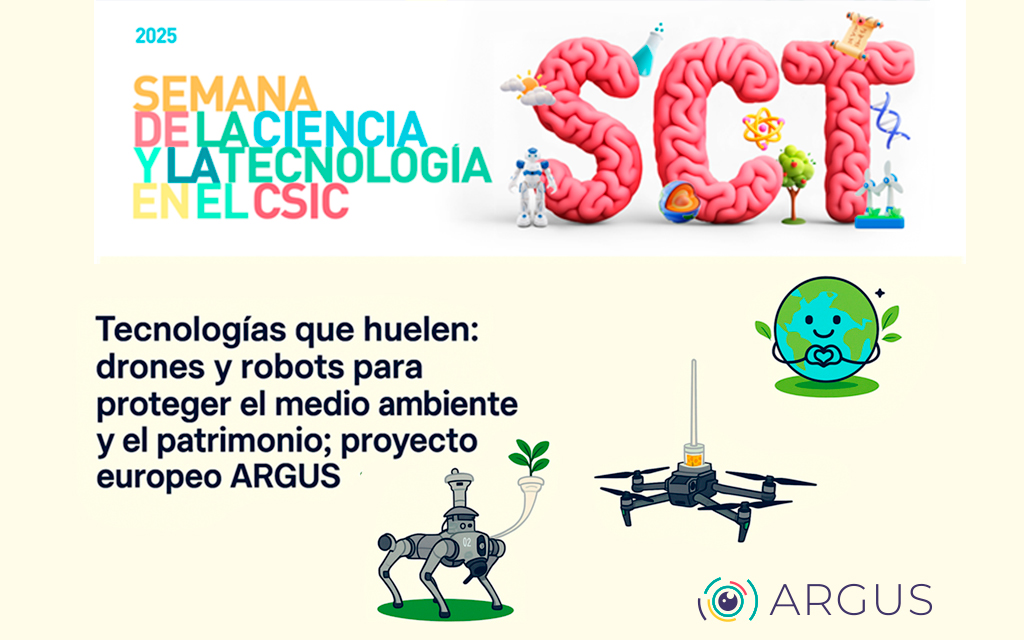What if technology could “smell” the air around us, detecting invisible threats to our environment and cultural heritage? This is no longer science fiction. At the upcoming Science Week (Semana de la Ciencia), visitors will have the chance to see how cutting-edge robotics and aerial systems that are being used in the ARGUS project are transforming the way we monitor pollution, prevent wildfires, and safeguard historic treasures.

On November 5, 2025, from 17:00 to 18:00, the Leonardo Torres Quevedo Institute of Physical and Information Technologies (CSIC) in Madrid will host a live demonstration of pioneering tools designed to track air quality in real time.
The showcase will feature:
- A quadruped robot dog, fitted with advanced gas sensors capable of detecting pollutants such as CO₂, SO₂, NH₃, and particulate matter. Agile and versatile, this robotic companion can navigate challenging environments while continuously sampling the air.
- A drone equipped with pollutant sensors, measuring CO, NO₂, and SO₂, along with temperature and humidity. Flying above landscapes and heritage sites, it can create dynamic spatial maps of air quality, offering a bird’s-eye perspective of invisible environmental changes.
These technologies open new frontiers in dynamic air monitoring. By mapping pollutants in detail, they can provide early warnings of wildfire risks, track urban air quality, and protect cultural heritage from the damaging effects of environmental stressors.
The event will not only highlight the technology itself but will also bring science to life with real experiment examples and a live demo of the quadruped robot in action. With a capacity of only 40 people, it promises to be an up-close and immersive experience.
Event Details
- Date: November 5, 2025
- Time: 17:00 – 18:00
- Location: Leonardo Torres Quevedo Institute of Physical and Information Technologies, C/ Serrano, 144, 28006 Madrid, Spain
- Capacity: 40 people
- More information here
This is a rare opportunity to see firsthand how drones and robots are being used to “smell” the world around us—pioneering tools at the crossroads of technology, environment, and cultural heritage protection.